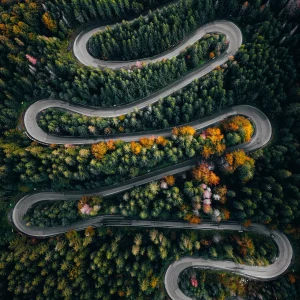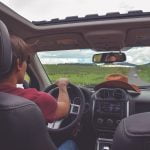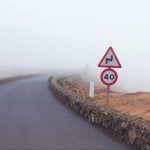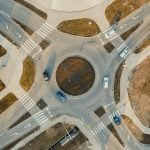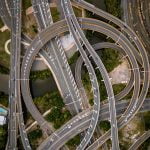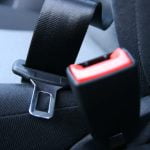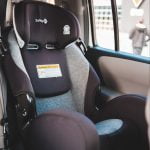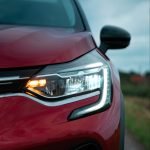Traveling to a new country is an exciting adventure, but it can also present unique challenges, especially when it comes to driving. If you’re a foreigner renting a car in Romania, here’s a comprehensive guide to help you navigate the roads safely and confidently.

Complete guide on driving in Romania
Traffic side

In Romania, vehicles drive on the right-hand side of the road. If you’re used to driving on the left side of the road, you’ll need to adjust to driving on the right.
Speed limits

Speed limits are strictly enforced in Romania. The general speed limits are 50 km/h (31 mph) in urban areas, 90 km/h (56 mph) on non-urban roads and 130 km/h (81 mph) on motorways. Always obey posted signs as speed limits may vary.
Traffic lights

Obey traffic lights at all times. Red means stop, green means go, and yellow means slow down and prepare to stop.
Roundabouts

Roundabouts are very common in Romania. Vehicles inside the roundabout have the right of way and those entering the roundabout must yield. Be careful, use your indicators when exiting, and follow the flow of traffic.
Right of way

At intersections without traffic lights, vehicles approaching from the right have the right of way. Always yield to vehicles on your right unless traffic signs indicate otherwise.
Seat belt use

Seat belts must be worn by all passengers in the vehicle, regardless of their seating position.
Child safety

Children under 12 years of age or shorter than 150 cm (4’11”) must use appropriate child safety seats. Make sure you have the correct seat for your child’s age and size.
Headlight use

Dipped headlights must be used at all times, even in daylight. This requirement is intended to improve visibility and road safety.
Alcohol limits

The blood alcohol concentration limit for drivers in Romania is 0.05%. However, there is a zero-tolerance policy for drivers who have had their license for less than a year and for professional drivers.
Road condition

Road conditions can vary greatly in Romania, from well-maintained highways to narrow country roads. Exercise caution, especially in rural areas where roads may be less predictable.
Tolls

Romania has a vignette system for the use of motorways. You must purchase a vignette (rovinietă) to use the highways. The cost varies depending on the duration and type of vehicle.
Fuel availability

Petrol stations are widely available, especially in urban areas and along major roads. Unleaded gasoline (benzină fără plumb) and diesel (motorină) are readily available.
Documents required

When driving in Romania, make sure you have your valid driver’s license, passport, vehicle registration, and proof of insurance with you at all times.
Emergency numbers

In case of emergency, dial 112, Romania’s universal emergency number. Operators speak several languages and can assist with police, medical or fire services.
Driving in Romania as a foreigner can be an enriching experience, allowing you to explore the country at your own pace. By familiarizing yourself with the local driving rules and etiquette, you can ensure a safe and enjoyable trip. Always exercise caution, respect the rules of the road, and enjoy the stunning scenery that Romania has to offer.
FAQs about driving in Romania
Is an International Driving Permit (IDP) required to drive in Romania?
While an International Driving Permit is not officially required to drive in Romania, having one can be helpful as it provides a translation of your native driver’s license, which can make interactions with law enforcement smoother.
Are traffic signs and information available in English in Romania?
In major cities and tourist areas, you may find road signs and information in English, but in rural areas, signs are likely to be in Romanian. Familiarize yourself with common road signs and basic Romanian phrases to help you navigate.
What’s the typical condition of rural roads in Romania?
Rural roads can range from well-maintained to rough and bumpy. Be prepared for potholes, uneven surfaces, and narrow passages, especially in less traveled regions.
Can I use my cell phone’s navigation application while driving in Romania?
Yes, you can use a navigation application, but the phone must be mounted in a hands-free cradle. It’s a good idea to set up your navigation before you start driving to minimize distractions.
Are there any special rules for winter driving in Romania?
During the winter months (usually from November to March), winter tires are mandatory. In addition, roads can become icy and slippery, so drive carefully and consider using snow chains in mountainous areas.
How do I pay for tolls and vignettes in Romania?
Vignettes can be purchased at gas stations, post offices and online platforms. Tolls are paid at designated toll booths on motorways. It’s a good idea to have cash on hand, as some toll booths do not accept credit cards.
What’s the protocol for interacting with law enforcement in Romania?
If you’re stopped by the police, remain calm and polite. Hand over your documents when asked, and if you don’t speak Romanian, politely ask if they speak English or another language you are comfortable with.
Is there any special etiquette for driving in rural areas of Romania?
In rural areas, it’s common for locals to use their hazard lights to signal that they are slowing down or stopping. Be aware of this practice and consider adopting it to communicate with other drivers.
How do I deal with livestock on the road in Romania?
In some rural areas, you may encounter livestock such as cows, sheep or horses on the road. Drive slowly and carefully and give the animals plenty of room. If necessary, honk gently to warn them.
Are there special rules for driving near trams in cities in Romania?
When driving near trams in cities, be careful and follow the same rules as for buses. Yield to trams when they’re entering or leaving the tracks, and avoid passing them when they’re stopped to pick up or drop off passengers.
